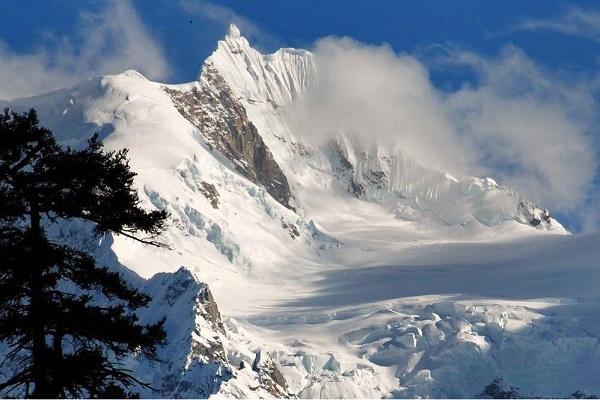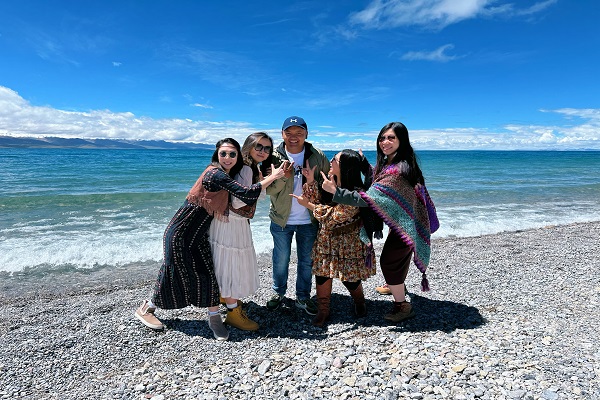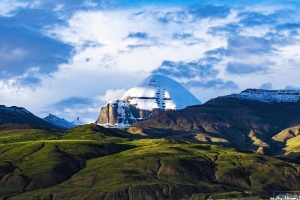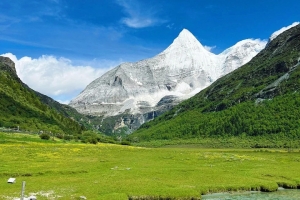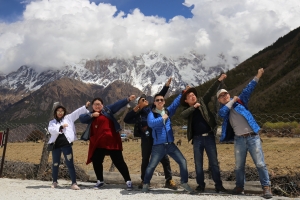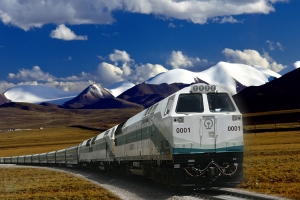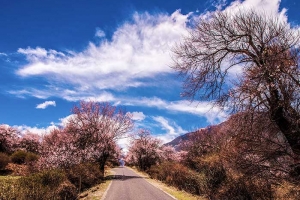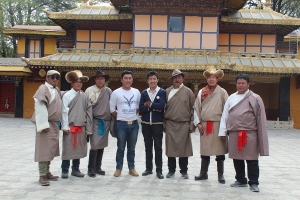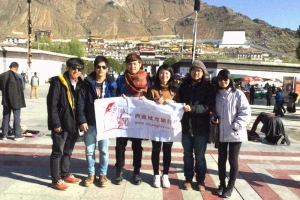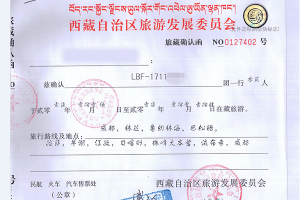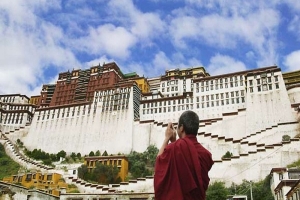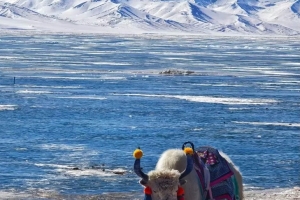Everest Base Camp (EBC) from Tibet offers a unique and less-trodden route to the foot of the world’s highest mountain. Unlike the more common Nepalese trek, this journey provides a smoother approach with vehicle access to EBC itself, breathtaking views of Everest’s north face, and an immersion into Tibet’s rich Buddhist culture. The adventure takes you through ancient monasteries, high-altitude landscapes, and traditional Tibetan settlements, making it as much a cultural journey as it is an expedition.
With costs ranging from $2,500 to $5,000, this trip requires booking through a registered travel agency, as independent travel in Tibet is not permitted for foreigners. Journey2Tibet ensures a seamless experience, handling permits, accommodation, and expert guidance to help you enjoy the grandeur of the Himalayas without the logistical hassle.
Getting to Tibet
Most travellers reach Tibet via Lhasa, the capital of the Tibet Autonomous Region. You can fly into Lhasa Gonggar Airport from major Chinese cities like Beijing, Chengdu, or Xi’an, or take the scenic Qinghai-Tibet Railway, the highest train route in the world. The train journey offers a gradual acclimatisation to high altitudes, helping to reduce the risk of altitude sickness before the adventure begins.
To visit Tibet, you will need:
- Chinese Visa (obtained in your home country)
- Tibet Travel Permit (arranged by your tour operator)
- Alien Travel Permit (required for Everest Base Camp and issued in Tibet)

Your journey officially begins in Lhasa, where a few days of acclimatisation allow you to adjust to the altitude while exploring the city’s stunning landmarks, such as Potala Palace, Jokhang Temple, and Barkhor Street.
The Overland Journey to Everest Base Camp
Unlike the Nepal side, where trekking is required, Tibet’s EBC route is accessible by road. The drive from Lhasa to Everest Base Camp covers roughly 600 km (373 miles) and takes about three to four days, ensuring a gradual ascent for proper acclimatisation. The route passes through some of the most awe-inspiring landscapes on Earth:
- Yamdrok Lake – A dazzling turquoise lake, considered sacred by Tibetans.
- Gyantse and Shigatse – Two historic towns where you can explore Pelkor Chöde Monastery and Tashilhunpo Monastery, home to Tibet’s second-highest spiritual leader, the Panchen Lama.
- Gawula Pass (5,198m/17,054ft) – A spectacular viewpoint offering panoramic views of the Himalayas, including Everest, Lhotse, Makalu, and Cho Oyu.
- Rongbuk Monastery (5,000m/16,400ft) – The highest monastery in the world, providing an up-close view of Everest’s formidable north face.
Everest Base Camp Experience
At 5,200m (17,060ft), Everest Base Camp on the Tibet side offers an unparalleled view of Mount Everest’s towering north face. Unlike Nepal’s base camp, where Everest’s peak is hidden behind other mountains, Tibet’s EBC provides a direct, unobstructed view of the summit.
Accommodation at EBC consists of the Rongbuk Monastery Guesthouse or seasonal tented camps (April to October). Expect basic facilities—simple bedding, communal restrooms, and limited electricity. The extreme altitude means temperatures can drop sharply, so warm clothing is essential.
A highlight of the visit is watching the sunrise over Everest, as the golden morning light bathes the peak in an otherworldly glow. After spending time soaking in the surreal landscape, travellers return to Shigatse before heading back to Lhasa.
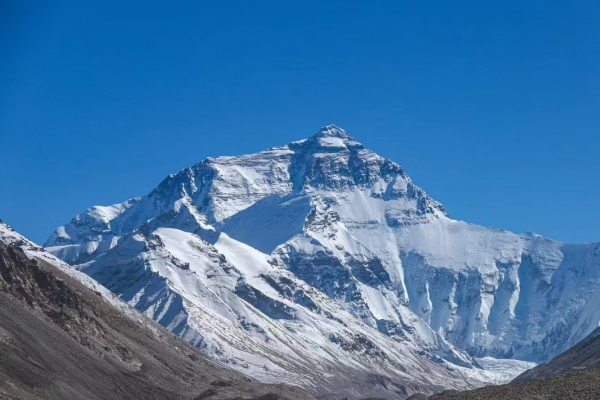
What to Bring and What to Leave Behind
Packing smartly is crucial for a comfortable journey. Essential items include:
- Warm layered clothing – The weather can be unpredictable, with freezing temperatures at night.
- Sturdy trekking shoes – While most of the journey is by road, short hikes may be required.
- Sunglasses and sunscreen – The high-altitude sun is intense.
- Personal medications – Including altitude sickness tablets, as there are limited medical facilities en route.
- Snacks and hydration tablets – The options for food can be basic, so extra energy boosts help.
Unnecessary items include heavy camping gear (since accommodation is arranged) and excessive electronics, as charging options are limited. A lightweight power bank is sufficient for keeping devices functional.
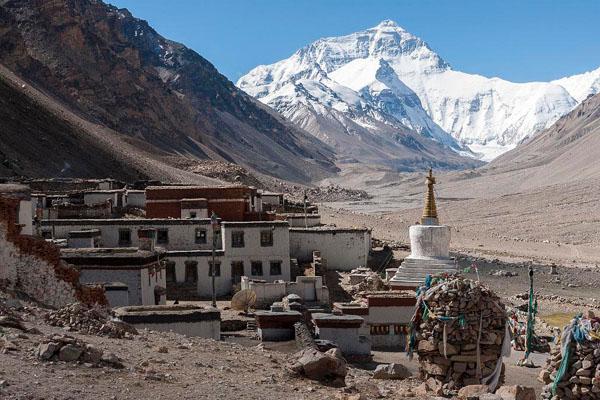
Cultural Highlights Along the Way
A journey to Tibet is not just about the mountains—it’s an immersion into a deeply spiritual and traditional way of life. Key cultural experiences include:
- Exploring Monasteries – From the grandeur of Potala Palace to the tranquil isolation of Rongbuk Monastery, each stop offers insights into Tibetan Buddhism.
- Interacting with Locals – Whether it’s sipping butter tea with a nomadic family or watching monks debate at a monastery, the warmth of the Tibetan people adds richness to the adventure.
- Prayer Flag Rituals – Many travellers take part in hanging prayer flags at high passes, a practice believed to spread goodwill and blessings with the wind.
Essential Tips for a Safe and Enjoyable Trip
- Acclimatise properly – Spend at least two nights in Lhasa before ascending to higher elevations.
- Stay hydrated – Dry mountain air can dehydrate you quickly, worsening altitude effects.
- Follow regulations – Tibet has strict travel rules, so always stay with your guide.
- Respect local customs – Tibet is deeply spiritual, so be mindful of cultural sensitivities, such as avoiding pointing at religious objects or taking photos inside monasteries without permission.
Journey2Tibet: Your Expert Partner for the EBC Adventure
Since independent travel to Tibet is restricted, booking with a licensed agency is essential. Journey2Tibet ensures a seamless experience by handling permits, transportation, expert guides, and comfortable accommodations. Our carefully curated itineraries balance adventure with cultural discovery, making your Everest Base Camp journey both exhilarating and deeply enriching. With experienced local guides and personalised service, we take care of the logistics so you can fully immerse yourself in the magic of Tibet’s highlands.
Conclusion
The Everest Base Camp expedition from Tibet is a journey unlike any other. It combines the raw beauty of the Himalayas with the timeless spirituality of Tibetan culture. Whether marvelling at Everest’s grandeur, exploring ancient monasteries, or traversing vast highland landscapes, this adventure leaves travellers with an enduring sense of wonder. With the right preparation, a trusted guide, and an open heart, your journey to the roof of the world will be an unforgettable experience.

